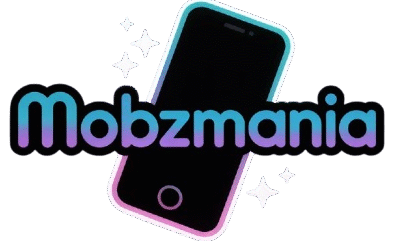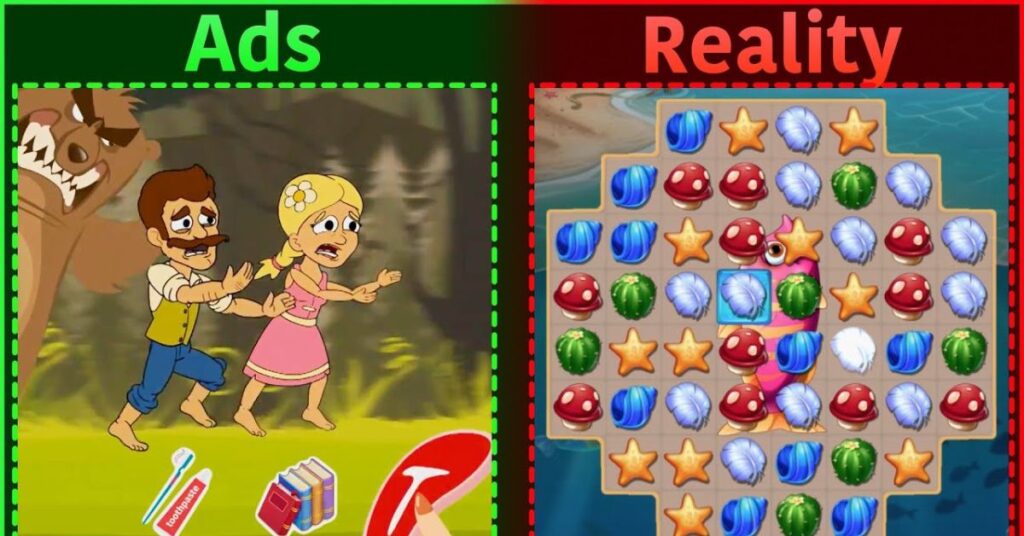Mobile gaming has grown into a billion-dollar industry in the USA, and one of the most fascinating aspects of this growth is how developers promote their apps. Best Mobile Games Ads that We Like are not just short clips to push downloads—they are carefully crafted mobile game advertising experiences designed to pull users in, spark curiosity, and drive in-app purchases. From puzzle games to strategy games, ads now combine storytelling, interactive play, and emotional hooks to capture attention in a matter of seconds.
In this article, we’ll explore some of the most engaging campaigns, from Royal Match to Candy Crush, and discuss how user acquisition campaigns are built around them. You’ll also see why creative game ads have become as entertaining as the games themselves.
Get Mapendo’s latest success story, about scaling in-app purchases profitably, reducing costs!
One of the best examples of effective mobile game marketing comes from Mapendo. Their latest success story shows how the right blend of ad creatives for gaming and conversion-focused advertising can completely change results. In one campaign, Mapendo focused on optimizing user acquisition strategies for mobile games by testing different playable ads and interactive story ads. The result? They managed to scale in-app purchases profitably, reducing costs while boosting engagement.
This case highlights the power of data-driven marketing campaigns. By focusing on what truly connects with players—short interactive demos, emotional narratives, and seamless calls to action—Mapendo not only cut acquisition costs but also increased player retention. For developers, this proves that mobile app promotions don’t always need big budgets; they need the right creative strategy.
What are mobile gaming ads ?
Mobile gaming ads are short but powerful marketing campaigns designed to attract new players and re-engage old ones. They are not just banner ads or static images anymore. Instead, today’s ads include playable ads, reward-based ads, interactive ads, and even in-game placements. Each style focuses on making players feel the digital fun / gaming experience before downloading the app.
For example, a playable game demo ad allows you to try a puzzle level before installing, while reward-based ads give players free coins or bonuses in exchange for watching. These strategies not only build brand recognition but also strengthen gaming user retention. In the USA, where players have endless choices, the success of a game often depends on the originality and emotional impact of its ads.
Royal Match
Among the Best Mobile Games Ads that We Like, Royal Match has earned a top spot thanks to its clever and humorous storytelling. The ads usually feature King Robert in dangerous or comical situations—whether he’s trapped by fire, drowning in water, or caught in chaos—and viewers are challenged to solve puzzles to rescue him. This story-driven ad style grabs attention instantly by mixing humor, urgency, and quick decisions, which makes players curious enough to click through and try the game.
What makes Royal Match truly brilliant is how it blends emotional advertising in games with pure entertainment-based advertising. The ads don’t just showcase puzzles; they pull players into a mini-drama where their choices matter. That emotional connection, combined with lighthearted fun, has turned Royal Match into one of the most successful and widely recognized casual puzzle ads in the USA, driving millions of installs worldwide..
Project Makeover
Project Makeover ads are a perfect example of interactive story ads. They show characters in desperate need of a fashion or lifestyle change. Players are given the power to choose clothes, hairstyles, or room décor, instantly creating emotional investment. Unlike many ads that focus only on gameplay, Project Makeover sells the dream of transformation, self-expression, and creativity.
This kind of engaging ad experience is highly effective in the USA, where audiences love makeover shows, DIY transformations, and relatable character arcs. It’s not just a game ad we like—it feels like an episode of a reality show, pulling in both gamers and casual viewers.
Gardenscapes
The ads for Gardenscapes are legendary because they don’t always show the actual gameplay. Instead, they create cliffhanger-style marketing campaigns where players must solve quirky scenarios. For example, Austin the butler may be stuck with leaking pipes or fires in the garden, and players must decide how to save him.
While some call this misleading, it works brilliantly because it builds suspense and curiosity. In terms of mobile app advertising trends, this shows how dramatization can fuel viral mobile game ads. The humor, combined with player engagement strategies, makes Gardenscapes unforgettable.
Candy Crush
Among the Best Mobile Games Ads that We Like, Candy Crush stands out as a timeless example. With over a billion downloads, it has become one of the most recognizable names in mobile history. The ads for Candy Crush may look simple, but their colorful visuals and cheerful music make them instantly appealing. Built around the freemium model, these ads remind players that they can enjoy free play while unlocking extras through in-app purchases. What makes them powerful is how they showcase the digital fun / gaming experience in the most straightforward way, proving that bright colors, easy gameplay, and familiarity can sometimes be the most effective advertising strategy.
Monopoly GO!
The ads for Monopoly GO! showcase how a classic board game can be reimagined for modern mobile audiences. The campaigns highlight strategy games, competitive features, and rewards that make playing with friends exciting. By blending nostalgia with cross-promotion in mobile games, Monopoly GO! reminds users of the board game while presenting a fresh digital twist.
Its ads focus heavily on social play, group competition, and shared victories, which is a perfect fit for the American audience that enjoys community-driven entertainment-based advertising.
Township
Township stands out because it combines farming and city building in a way that feels both creative and relaxing. The ads show users planting crops, constructing buildings, and building thriving towns. They appeal to the human desire for progress and creativity.
The reason Township ads perform so well is that they sell a sense of ownership. Players feel responsible for their town, and this emotional tie makes the ads powerful. This is an excellent example of mobile game monetization tied directly to emotional engagement.
Words of Wonder: Crossword
The ads for Words of Wonder: Crossword appeal to puzzle lovers and those who enjoy mental challenges. These campaigns are simple yet effective, presenting a few letters and asking players to form words. It’s both educational and entertaining, which appeals to a wide age range in the USA.
This shows how attention-grabbing ads for gamers don’t always need flashy graphics or over-the-top stories. Sometimes a straightforward casual puzzle ad is enough to grab attention, especially in an age where people seek both fun and brain training.
Color Water Sort
Within the Best Mobile Games Ads that We Like, Color Water Sort shines because it taps into the hugely popular “oddly satisfying” trend. Watching streams of colored water neatly fill bottles creates a sense of calm that resonates with stressed players looking for relaxation. These ads are simple yet powerful, as they transform ordinary gameplay into a soothing digital fun / gaming experience. By appealing to the human need for order and completion, Color Water Sort has generated viral mobile game ads that spread quickly across platforms. What makes them special is how this style of conversion-focused advertising combines emotional comfort with engaging gameplay, creating a unique connection between the ad and the audience.
King’s Choice
King’s Choice ads are different from casual puzzle games. They dive into dramatic storytelling, romance, and role-play. With scenes that feel like medieval dramas, players are invited to choose their path—power, love, or betrayal.
The appeal here is rooted in interactive story ads that give users agency. It’s not just about playing; it’s about living a fantasy. This strategy makes King’s Choice stand out as a great example of emotional advertising in games.
Tower War
Tower War ads focus on quick decision-making and high-paced strategy. In these ads, players must choose the right tower to attack or defend. The fast action is shown in short, clear clips that instantly grab attention.
These strategy game ads work because they highlight both skill and excitement. They are proof that game install strategies don’t always need complicated visuals—sometimes speed and competitiveness are enough to drive installs.
User acquisition strategies for mobile games
The heart of successful mobile game marketing lies in smart user acquisition campaigns. Developers often test dozens of ad creatives before choosing the right one. Some focus on reward-based ads, others on in-game placements, while many experiment with viral mobile game ads.
One common strategy is A/B testing, where two different ads are shown to players, and the one with better results is scaled up. Another method is localization, adjusting ads for USA audiences by adding cultural references, popular slang, or familiar visuals. For example, ads might use familiar TV shows like Windy City Rehab or public figures such as Alison Victoria to connect emotionally with American viewers.
The table below shows how different ad styles perform:
| Ad Type | Strength | Best Use |
| Playable Ads | Highly engaging, interactive | Puzzle and casual games |
| Reward-Based Ads | Boosts retention and loyalty | Freemium model games |
| Interactive Story Ads | Strong emotional pull | Story-driven and role-play games |
| In-Game Placements | Seamless integration | Strategy games and cross-promotions |
| Nostalgic Mobile Ads | Appeals to memory and emotion | Classic re-releases like Monopoly GO! |
May Also Read: How to Add Your Site to Google Search Console
Conclusion
In the end, the Best Mobile Games Ads that We Like all share one thing in common: they connect with players emotionally while showing off the fun of the game. Whether it’s the urgency of Royal Match, the creativity of Project Makeover, or the relaxing charm of Color Water Sort, each campaign proves the power of storytelling in mobile game advertising.
For developers, the lesson is clear. Focus on creative game ads that entertain, test different approaches, and never forget that ads are part of the gaming experience. The future of mobile app advertising trends will belong to campaigns that are interactive, emotional, and above all—memorable.

Jake Miller is a mobile troubleshooting specialist with 7+ years of experience solving Android and app-related issues. He tests every fix on real devices to ensure accuracy and reliability. Jake creates simple, step-by-step guides to help users quickly resolve everyday smartphone problems.



